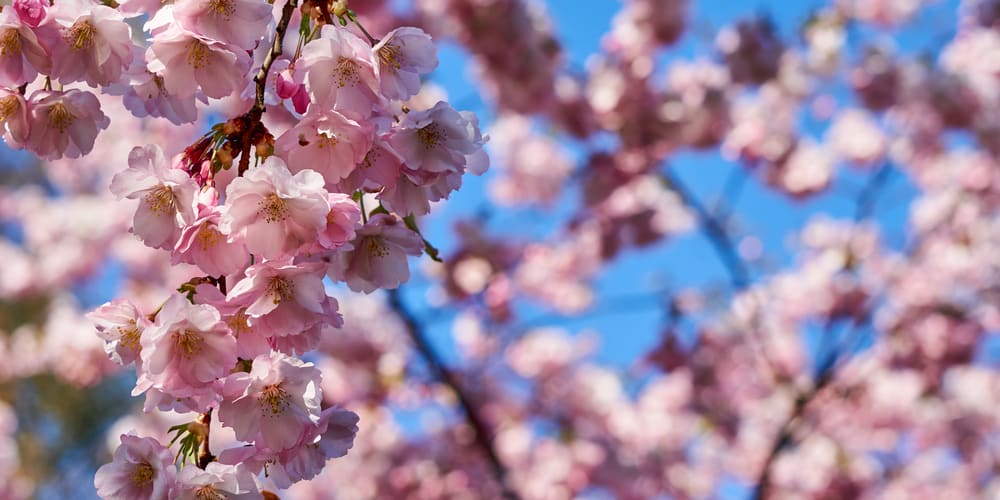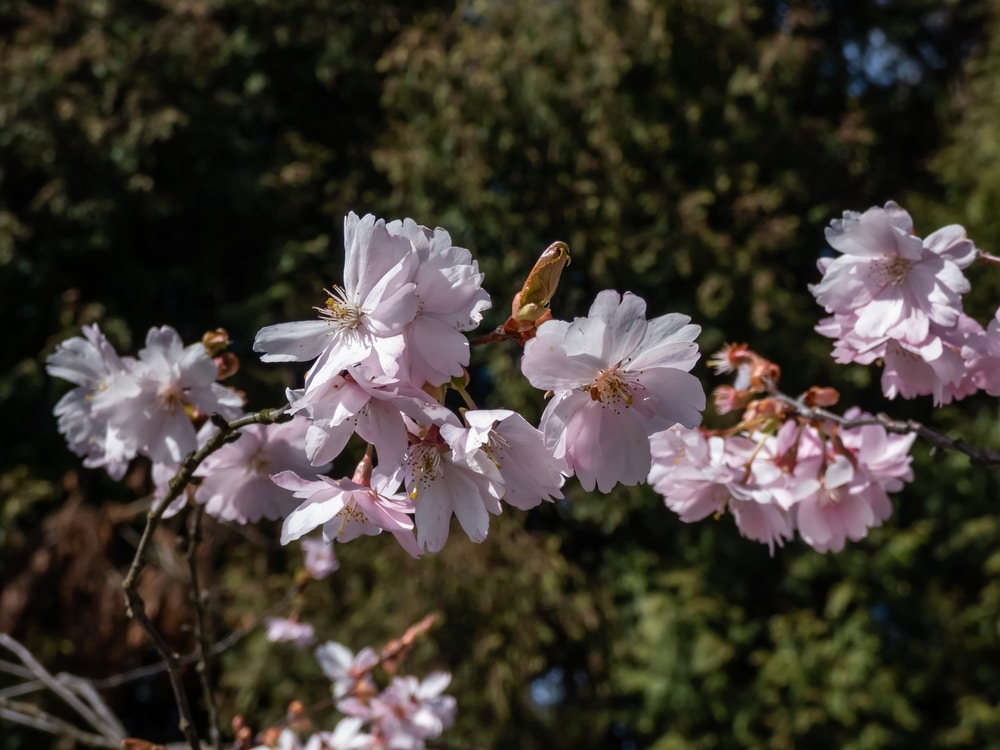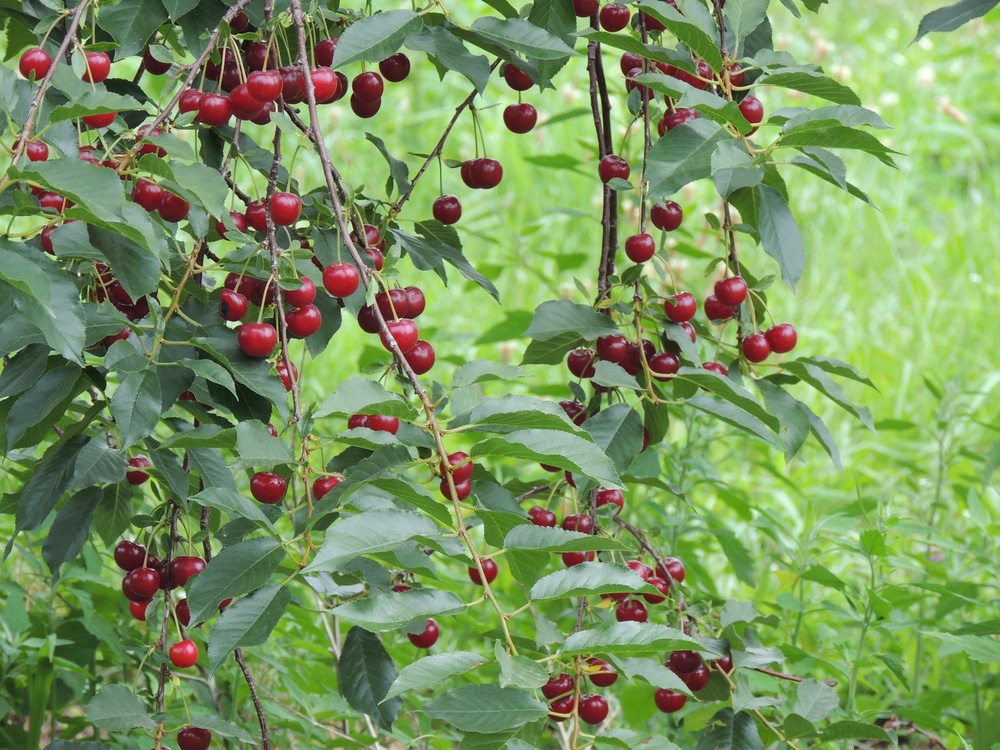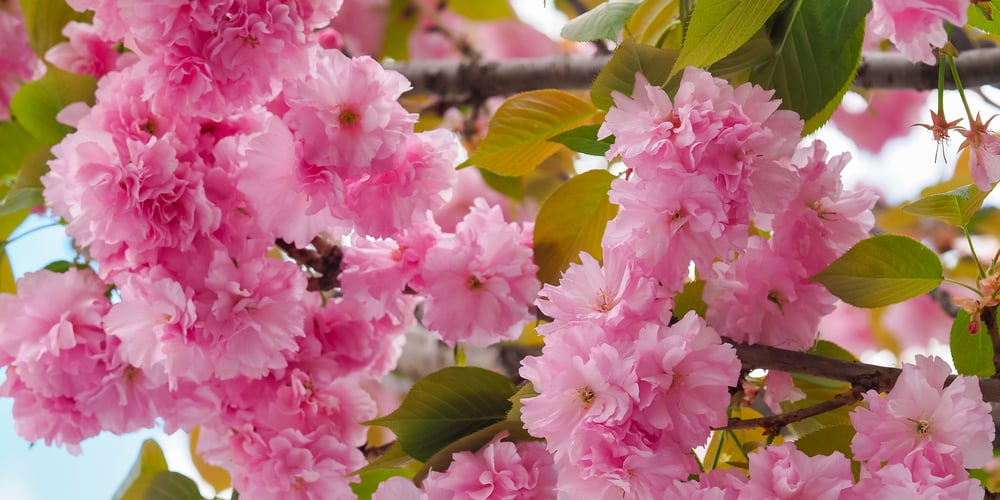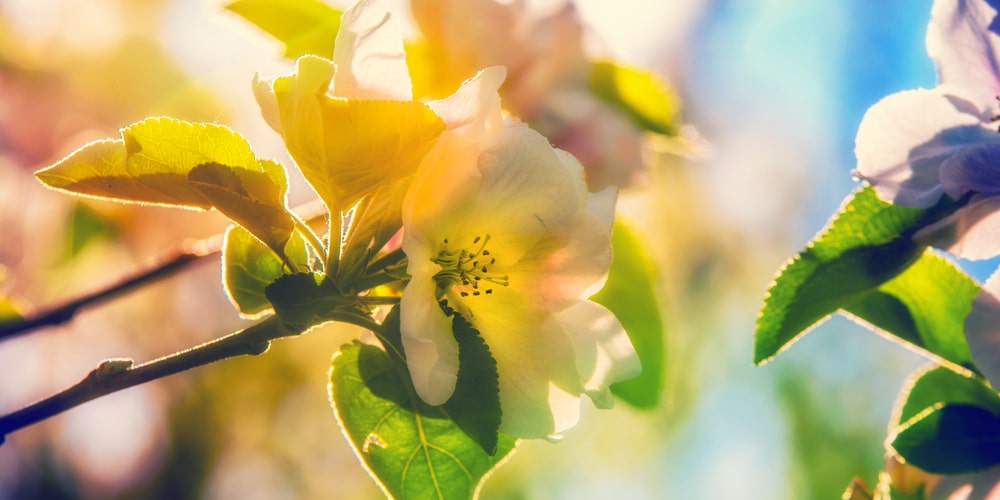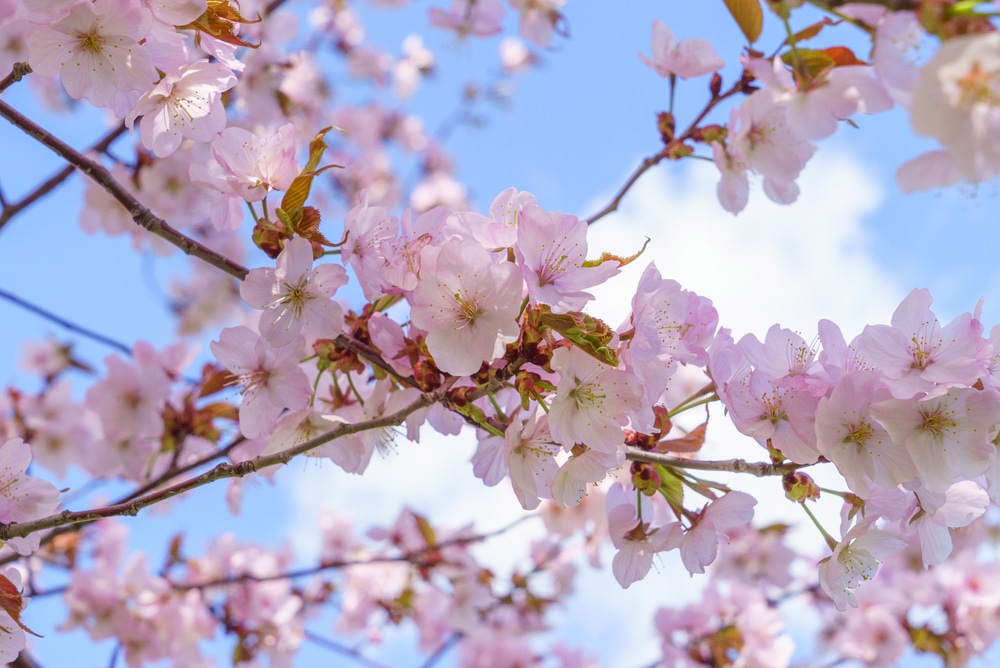The exact origin of the cherry tree is unknown. However, it likely originated near the Black Sea and later grew in Asia, Italy, and Greece before arriving in England with the Romans. English colonists later introduced the cherry tree to New England, including Virginia.
Virginia Cherry Tree
These days cherry trees are still enjoyed for their fruit and ornamental value. Read on to learn about the best Virginia cherry trees.
Yoshino Cherry
The Yoshino cherry, also known as Prunus x yeodensis is primarily an ornamental tree. It is known for its delicate white flowers and 30-foot height. The tree does not produce fruit humans like to consume, but the bitter drupes are ideal for birds. This cherry type is one of the most common varieties in the Virginia area.
Higan Cherry
Known as Prunus subhirtella, the Higan cherry is known for its beautiful pink and white spring blooms. There are a few different cultivars of this species with slightly different blooms or branch orientations. It also has a weeping form, which is also very popular. Besides being beautiful, this tree is also easy to care for.
Lambert Sweet Cherry Tree
The Lambert sweet cherry tree is one of many cultivars of Prunus avium, which is a sweet cherry. The cherries from this tree are sweet and appear after a shock of beautiful white flowers. This tree can grow to 35 feet tall. However, many people often prune them down to 15 feet. If you want an even smaller option, this tree has some dwarf varieties.
Black Tartarian Cherry Tree
While this tree produces lovely white blooms in the spring, it is primarily known for its drupes. The black Tartarian, another member of the sweet cherry or Prunus avium family, produces delicious sweet fruit.
This tree does well in USDA zones five through eight. It can grow to about 30 feet tall. If you want a smaller version, there are dwarf varieties about half the size of the full-sized tree.
Corum Sweet Cherry Tree
The Corum sweet cherry tree is another member of the Prunus avium species. The yellow and orange cherries ripen somewhat earlier than many similar species. This variety can self-pollinate. However, it also does well when planted alongside other trees. It reaches about 15 to 18 feet in its maturity.
Kwanzan Cherry
The Kwanzan cherry is similar to the yoshino cherry tree and is a variety of Japanese flowering cherry, also known as Prunus serrulata. 3,000 of these trees were a gift from Japan to the United States in the early 1900s.
If you are in the Virginia and Washington D.C. area during the early spring, this is likely one of the striking cherry blossom trees you will see. The tree is not just a spring beauty. It also provides lovely color in the autumn and no fruit.
Early Richmond Cherry Tree
The early Richmond cherry tree is a variety of sour cherry, which has the scientific name of Prunus cerasus. While other cherry trees are prized for their blossoms, the sour cherry mostly gets used due to its fruit.
Since the cherries are somewhat sour, they are often eaten in baked goods. Unlike other cherry trees, this variety self-pollinates, meaning you only need one to get fruit.
Sargent Cherry
Sargent cherry, also known as Prunus sargentii, is a large, adaptable cherry tree that produces pink flowers in the spring. In the fall, it has gorgeous bronze foliage.
This fast-growing tree typically reaches 40 to 50 feet tall. It loves full sun, but it does well in almost every type of soil. As long as you give this tree some attention as it gets established, it requires little care for the rest of its life.
Final Thoughts
People enjoy some cherry trees for their fruit and others for their ornamental value. When the cherry blossoms appear, it is a sure sign of spring. While this tree has historic and cultural importance in Virginia, the tradition of the cherry blossoms carries on today.
